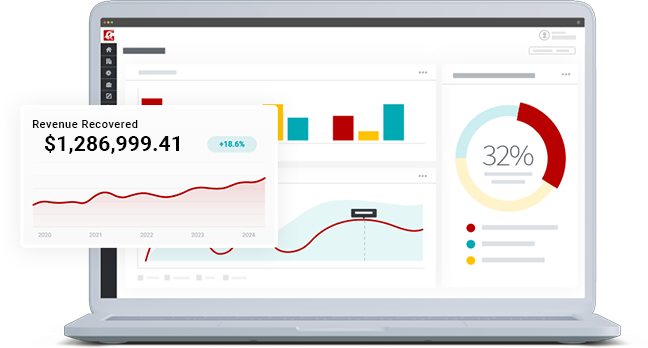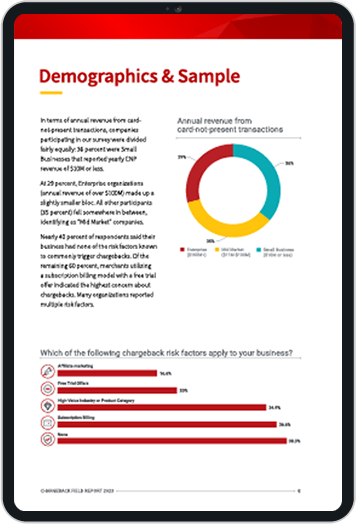Understanding Reverse Email Lookup: Tips, Tools, and More
“Never open emails from people you don’t know!”
That’s one of the most basic email security rules there is. But, what if the email feels kinda legit? What do you do then?
Fraudsters have discovered that using even a small amount of personal information can make the receiver unsure enough to lower their guard. In those cases, using reverse email lookup can help you trace down those senders you’re not quite sure about.
But, did you know you can also use reverse lookup by email to personalize marketing? Or to validate vendors, retain security compliance, and more? In this post, we take a look at how reverse email lookup works, why you might want to try it, and best practices for using it.
Recommended reading
- What is Mastercard SecureCode? Here’s How it Works
- The Top 10 Fraud Detection Tools You Need to Have in 2025
- ECI Indicators: How to Understand 3DS Response Codes
- How to Detect Fraud: Top 20 Tips to Stop eCommerce Scams
- Top 20 Fraud Red Flags All Merchants Should Know in 2025
- Transaction Monitoring Software: A Must-Have Fraud Deterrent
What is Reverse Email Lookup?
- Reverse Email Lookup
Reverse email lookup refers to the process of obtaining information about a party by searching the sender’s email address.
[noun]/rē • vərs • ē • māl • lo͝ok • əp/
If you’re trying to find someone’s email address, you’d probably start by running a search on their name, right? The search engine comes back with news reports or social media accounts. Then, you poke around until you find a point of contact.
A reverse email lookup is the same thing, only backwards. You start with an email address, and try to connect that to a name, phone number, or other personal details that are publicly available over the internet.
Unfortunately, fraudsters can use reverse email lookup to obtain your personal information. This is why it’s important to keep your personal details secure as much as possible.
How Reverse Email Lookup Works
Reverse email search tools scour the internet for references connected to any email address. This includes public records as well as social media accounts and other sources.
Among other things, this could include full name, age, address, current and past phone numbers, property ownership, and work/education histories.
The rate of accuracy here depends on how advanced your search tool is. Some won’t return any non-confirmable information, while others will provide a “best guess” response that includes other potential matches.
All that being said, you can make use of a typical reverse email lookup like this:
How Reverse Email Lookup Makes Use of OSINT
If you’re really bored, you can theoretically do a reverse email lookup manually. It would involve a lot of unnecessary work, though. And, there’s no reason to operate like this when we have tools built on open source intelligence (OSINT) to do the work for you.
Instead of just a random collection of information, OSINT searches work within given parameters to gather, analyze, and distribute online information to meet specific intelligence needs. In other words, it takes all that search data and creates a ready-to-use profile.
Using OSINT is not only faster than a manual search, it may also be able to access records that, while publicly available, won’t be found on a “surface” internet search.
You type an email address into an OSINT platform, and the tool goes through a series of steps:
Use Cases for Reverse Email Lookup
Practical uses for reverse email lookups include identifying suspicious user accounts that could be connected to fraudulent activity, leading to a reduction in chargeback risk. It can also help validate user legitimacy and provide insights into customers that can be leveraged for personalized marketing.
So, why would you want this information?
For an individual, the reason is usually a need to chase down a mysterious email they found in their inbox, or perhaps verify an online seller. As a merchant, however, a reverse lookup email address can give you detailed information that can be used in a number of ways. For example:
- Fraud Prevention: Flagging suspicious accounts that could be tied to acts like review fraud.
- Chargeback Reduction: Identifying potential friendly fraud prior to a transaction.
- Customer Insights: Gaining consumer background that can help with personalized marketing.
- Risk Assessment: Ascertaining the risk represented by clients, business partners, or transactions.
- Anti-Money Laundering: Tracing the digital trail of illicit funds to expose hidden assets.
Tech-savvy fraudsters know ways to avoid being traced
We can help you spot those tricks and protect your revenue
Request a Demo
Is Reverse Email Lookup Legal?
Yes, reverse email lookup is legal, as long as you’re using it for legitimate purposes, like validating buyers or vendors.
The wide range of data you can gather through reverse email lookup is enough to lead us to yet another question: is collecting all this data legal?
Technically, yes. Anything returned by a reverse email lookup is available in some public database or hall of records somewhere. Since it’s all public records, there’s nothing underhanded about collecting it.
The power of a reverse email lookup is that it gets you all that information in the blink of an eye… including things you might not even think to look for. But as long as you don’t use the information for the wrong purpose, reverse email lookups are totally legal.
That said, legal actions can be used for illegal purposes. It’s important to remember that if you can find the information… so can a fraudster.
How Criminals Can Use Reverse Email Lookup to Commit Fraud
Reverse email lookup can be used by fraudsters to obtain personal or business information that can in turn be used for illicit purposes.
While you’re using reverse email lookup to track down fake accounts, cybercriminals are using it to create fake accounts.
Think about it: a person’s email — especially professional email addresses — commonly include part or all of that person’s name. Most will also have a number tacked on the end; maybe a date of birth or some other piece of personal information.
The hacker does a reverse email lookup, and just like that, they have a strong start for tracking down additional personal data.
If they have an email address, crooks can use algorithmic search techniques to find associated passwords. For context, a seven-character password using upper- and lower-case letters and numbers can usually be identified in a minute or less.
Worse, folks tend to use the same password in multiple places. Starting from a reverse email lookup, hackers may be able to access all the victim’s accounts within minutes.
Fraudsters use these tricks on individuals, but they target merchants, as well. The payoffs can be considerably greater: not only could they make purchases or gather intel under your name, they might even get enough information to breach your data banks, opening up a whole new Pandora’s Box.
Advantages of Using Reverse Email Lookup:
- Improved fraud detection
- More accurate & reliable customer data
- Customer & vendor validation
- Decrease in fraudulent chargebacks
Challenges of Using Reverse Email Lookup:
- Obtaining accurate data
- Privacy concerns & ethical/legal considerations
- Risk of false positives
- Speed
List of Reputable Reverse Email Lookup Service Providers
There are countless service providers out there specializing in reverse email lookup. Some are available for free; if you’re going to be performing reverse email lookups at scale, though, you’ll probably need to pay for a service.
Not sure where to start? Here’s a list of reputable providers that may offer the service you need:
| App | Search Returns | Support | Pricing |
| BeenVerified | Name, Email, Phone, Address | Android, iOS | 7-Day Trial |
| Hunter | Company Domain, Email, Name | Extensions for Firefox, Crhome, Edge | Lifetime Free Basic Plan |
| Social Catfish | Name, Username, Image | Email, Web, Android, iOS | 3-Day Trial |
| Snov.io | Company Name, Email Domain, Name | Windows, macOS, Linux, iOS, Android, Crhome (Extension) | Lifetime Free Basic Plan |
| Spokeo | Name, Email, Phone Number, Address | Android, iOS | Free Basic Searches |
Best Practices for Using Reverse Email Lookup
To get the most from reverse email lookup, combine it with other fraud detection tools. Make sure the data you receive is accurate and secure, and use the information provided only for approved actions.
To ensure you’re using reverse email lookup tools in a responsible and ethical manner, consider the following tips:
Use a Reputable Service
A dedicated, trustworthy reverse email lookup tool is more likely to give you the most usable data more quickly. Look for a provider with a strong reputation for privacy, security, and ease of use.
Combine Tools
No single fraud prevention tool does everything. Combine your reverse email lookup service with things like IP geolocation, device fingerprinting, velocity checks, and so on.
Prioritize Security
When dealing with people’s personally identifiable information, you want to go above and beyond to keep the data safe. Be especially responsible with any sensitive information.
Keep it Clean
The beauty of reverse email lookup is that it enables you to build a database of verified emails. For that to be useful, however, you need to practice good data hygiene, so that your database is secure, accurate, and up-to-date.
Double Check
Again, no one solution will give you 100% results. Make sure you avoid over-relying on reverse email lookups, especially until you get a feel for how they work. Always verify results against additional sources.
Reverse email lookup tools are one more way you can protect yourself from fraudsters. They offer valuable insights to allow more informed decisions.
That said, they’re not a perfect solution. You need to make sure you choose a reputable service, maintain data security, and balance usage against privacy and security concerns.
Also, remember that reverse email lookups will only help with certain types of fraud. Ultimately, you need a comprehensive cost-effective prevention strategy that addresses all your fraud issues. Contact us today to learn more.
FAQs
What does reverse email lookup do?
A reverse email lookup provides information about the sender by entering the sender’s email address.
How do I find out who an email address belongs to for free?
Reverse email services such as Spokeo allow you to identify the owner of an email address through public records and other openly available sources.
Is there a free reverse email lookup?
Yes. Some, like Spokeo, offer free basic services; others, such as Social Catfish, offer free trial periods before requiring enrollment.
Does Google have a reverse email lookup?
Yes, as do other search engines like Yahoo and Bing. In fact, just about any search engine will probably reveal at least some user information by searching for a specific email address. The information — and its accuracy — may be limited, however.
How to find out who owns an email address?
The most effective way is to use a reverse email lookup service, but you can also find information through search engines, social media platforms, and other tools.
Can someone get your personal information from an email address?
Absolutely. In addition to the owner’s identity, you can usually find additional data such as location, job, or social media accounts. It is even theoretically possible to match an email address to information involved in a data breach, thereby allowing identity theft.














